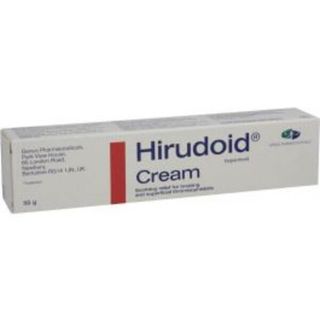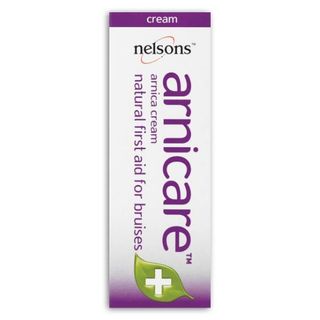
Bruising
Everyone gets bruises from time to time when they knock or bang themselves - it’s simply part and parcel of life. And while a purple or black bruise can look unsightly and cause a bit of pain, they’re really nothing to worry about. In fact, they’re usually more of an annoyance than anything else and will heal on their own without treatment. If you suffer a more serious bruise with lots of swelling, it can make it harder to move until the swelling subsides, but you can get over-the-counter medicines which will help with any inflammation and discomfort. Let’s make sure you get the right care to heal quickly and comfortably.
View recommended products for Bruising
Don't wait to get the medical help you need.
View our recommended treatments and select your preferred treatment and quantity from a list of options for you.
- Selected by our UK-based medical team
- Quick and easy checkout
- Treatments dispatched same day (before 3pm)
Ordering as easy as 1, 2, 3
1. Find the ideal treatment
2. Get a free consultation
3. Enjoy speedy delivery
Advice for Bruising
What is bruising and what causes it?
When you sustain an injury in which part of you (whether flesh, muscle, or bone) is crushed without the nearby skin breaking (this could involve impact damage, dangerous compression, or over-rotation), blood leaks from burst small blood vessels but has nowhere to escape. This blood will gather near the surface of the skin, causing notable discolouration.
It bears noting that the leaked blood isn’t responsible for the pain of a bruise. Instead, the level of discolouration merely reflects the severity of the damage. The more discoloured the bruise, the more blood vessels have burst, and the more severely the injury has affected you.
In rare cases, people can develop unexplained bruising. This is most common in people with issues that prevent their blood from clotting normally, leading to it leaking from blood vessels. When spontaneous bruising isn’t the product of a bleeding disorder, though (or certain medical treatments such as blood thinners), it can be an indication of something more serious, such as leukaemia or a liver disease.
When bruising occurs due to a clear injury, it isn’t something to worry about. When it stems from vascular disorders or other known medical conditions, though, it can merit investigation — and when easy bruising becomes an issue for no clear reason, you should see your healthcare provider.
What are the symptoms of bruising?
Discolouration and inflammation are the most straightforward visual indications of bruising, but pain and sensitivity will make it clear to you when you’ve suffered significant damage. Modest injuries that don’t burst any blood vessels won’t produce any bruising, but the affected tissue will still be keenly sensitive and in need of protection until it heals.
You can typically determine the age of a bruise by considering the colour. It’ll be red when it’s fresh because the leaked blood is high in oxygen, but that blood will turn black or blue (or even purple) once that oxygen runs out. When your body starts to break down the blood, the bruise will turn green or yellow, and it’ll end up as a light brown while it fully heals.
Severe bruising is inevitably accompanied by much stronger discolouration. The level of sensitivity will be much higher as well, and a heavily-bruised muscle will be less performant. When you suffer a bruise, you must figure out how (if at all) to change how you move.
How is bruising diagnosed?
If you have a bruise on your flesh, it’s extremely easy to tell, and diagnosis will concentrate on the severity and cause of the problem. If you develop a bruise on your bone (if you hit your elbow, for instance), it can be much harder to tell: if there’s no break in the bone, healthcare professionals will rely on you to communicate your level of discomfort.
When there’s no clear cause for the bruising, an assessment of the bruised area might not be sufficient. You’ll likely need to have bloodwork done in an effort to determine what’s going on (and whether you need treatment). You may have an undiagnosed bleeding disorder (even with no family history of that) or a serious issue with your blood flow.
How can I treat bruising?
Most bruises don’t require treatment of any kind, with minor bruises being only mildly painful and inconvenient. If you have serious bruising (greatly discoloured) or excessive bruising (covering a broad area), though, it may be so painful that you need to address it.
If that’s the case, you should look into common painkillers. Those with anti-inflammatory properties can effectively treat bruise pain and discomfort, with Ibuprofen tablets and Ibuprofen gel being great options. If the pain is particularly severe, seek more potent painkillers: you may even need to get a prescription-strength treatment if you’re finding it tough to endure.
And if your goal is to reduce swelling rather than relieve pain, there are relevant medications used for treating bruises. Hirudoid is a topical anti-inflammatory treatment that can alleviate swelling to make bruising easier to handle, so you might want to consider applying Hirudoid gel or Hirudoid cream to the injured area.
We mustn’t forget treatments that don’t require medication, though. Applying a cold compress, an ice pack or even a bag of frozen vegetables to a bruised area can help reduce the swelling and numb the pain. It’s also thought to help tissue heal. If you can avoid medication, it’s best to do so, since any use of a painkiller will reduce your tolerance and decrease future efficacy.
How can I prevent bruising?
If you’re wondering how to stop bruising entirely, the simple answer is that you can’t. No matter how safely you proceed, there will always be instances in which you bruise yourself. You might accidentally hit your arm on a doorway, for instance, or drop something heavy on your foot. What you can do, though, is take action to make bruising less likely, and to minimize bruising when it’s totally unavoidable. Here are some tips for doing just that:
- Wear protective gear when appropriate. If you’re playing contact sports, for instance, you should wear shin guards, boots, and anything else you feel will protect you from injury. And if you’re working on a DIY project, wear goggles, padded clothing, thick gloves, and a hard hat if there’s any chance of something heavy falling on you.
- Make your living area safer. If your bedroom is particularly untidy or you have items of furniture that stick out in awkward places, you can easily trip or hit your limbs quite hard. Making living areas safer isn’t just for newborns. There’s no sense in living in danger when you don’t need to, so take the time to do some clearing.
- Limit distractions during exercise. It’s become very common for people to listen to music or podcasts while they exercise, and it can lead to them zoning out. As nice as this can be on a long jog, it can easily result in accidents due to the minimal attention being paid to what’s going on. So if you like to exercise outdoors, try to be more mindful of what you’re doing. This will help you be safer.
